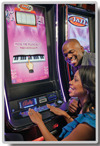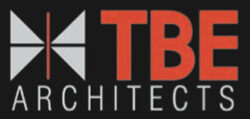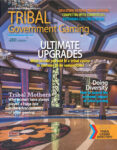
Commercial casinos have traditionally maintained a reputation for being, perhaps, a step behind the mainstream when it comes to new technologies. But not in Indian Country.
Native American casinos have been the scene of some of the most groundbreaking advances in casino system and marketing technology, particularly in the past decade.
“From the start of Indian gaming to the present, tribal governments have been leaders in the use of gaming technology,” says Knute Knudson, vice president of global business development for slot manufacturer International Game Technology. “This tribal innovation has been driven by tribal government’s desire for economic self-sufficiency, and by the lack of preconceived thoughts on what worked in the past in traditional gaming.”
Knudson has been involved in Indian gaming since its start in the early 1990s, when he was vice president of Sodak Gaming, a major supplier to gaming tribes. He says as Indian gaming matured, mastering new technologies was a necessity in overcoming a number of challenges.
“Since the passage of the Indian Gaming Regulatory Act, tribes have used technology to address unique regulatory challenges,” Knudson says. “Regulatory requirements in certain jurisdictions prompted tribal casinos to be among the first casinos to use ticket technology rather than cash. Ticket technology has revolutionized the commercial casino, replacing tokens or coins with vouchers. The first time I saw cash-in/ticket-out technology deployed in a casino was in a tribal operation.
“Video products, ticket technology, server outcome determination and non-slot math solutions for player interface devices were all used to overcome difficult hurdles that tribal governments were forced to clear. The technology utilized to meet these obstacles resulted in new and better products for the entire gaming industry.”
He adds that Class II gaming in itself has formed the basis of new slot technologies in central-determinant video lottery markets and elsewhere. “Many Class II gaming technologies that were originally developed exclusively for tribal gaming are used today in gaming jurisdictions throughout the world,” he says.
Knudson says tribes have also broken new technological ground without being prompted by regulation. “Consider wide-area progressive system games,” he says. “In the ’90s, early in the history of tribal gaming, tribal casinos were the first to use WAPs to link games in multiple jurisdictions, creating the critical mass necessary for growth in mega-jackpot gaming solutions to satisfy customer demands. This enabled tribes to offer substantial jackpots, which generated increased customer play at the linked casinos.
“Tribes have also created innovative solutions for slot floor performance analysis, bonusing features within games and systems, and marketing techniques.
New Frontiers
It wasn’t long after the first Indian casinos appeared that tribes began to become leaders in technological innovation.
“In the early 1990s, as Native American casinos developed, they took the best available technology out of the non-tribal casinos,” notes Bruce Rowe, senior vice president of strategy and customer consulting for slot manufacturer Bally Technologies. “Most of that technology was developed outside of the tribal casino industry. However, in the 2000s, as tribal properties became more profitable as well as more independent, more innovation started coming out of tribal casinos.”
Rowe adds that the structure of tribal gaming helped speed the transformation of the tribes into technology leaders. “They were independent, with a level of autonomy at both the property and capital-approval levels that let them make decisions fast,” he says. “They remained focused on the property, and what would be good for the property. The fact that they were single properties managed by their own gaming commission, that they were GLI locations (for product certification), and that they were spending a lot of cash, created an environment for new technology.”
Starting with the Class II environment—the first server-based gaming in the U.S.—tribes were “familiar with a certain level of networking and infrastructure traditional casinos were not,” Rowe says.
Rowe should know. Some of the most promising new system technology that Bally has produced was seen first in Native American casinos. “We developed a beverage-ordering system with the Poarch Band of Creek Indians in Alabama,” he recalls. “We worked with the Seminoles to place 9,000 games on a high-speed floor, the first casino in the country to have that many games on a high-speed network, both Class II and Class III.”
More recently, that leadership has accelerated, as Bally has partnered with the Mashantucket Pequot tribe in Connecticut, California’s Barona Band of Mission Indians and Pechanga Tribal Nation, and other tribes to launch never-before-seen technology. Some of the innovation has been within the confines of the company’s industry-standard SDS casino management system; other strides in networked technology have utilized the iVIEW Display Manager system and Bally’s Elite Bonusing Suite, with some bonus events played out on the groundbreaking iDeck virtual button panel.
“We’re implementing our Service Tracking Manager at Foxwoods,” Rowe says. “This takes real-time transactional data out of SDS and allows us to use that to offer differentiated service on the casino floor.” For employees, the system tracks jackpots, door-open messages, printer paper levels and other service-related issues and alerts employees on mobile devices, dispatching employees immediately to minimize machine downtime.
The Barona and Pechanga tribes have been host to a wealth of networked Bally events at their San Diego-area casinos that have driven coin-in and maximized carded play. Barona Valley Ranch Resort & Casino was the first to launch “Virtual Racing,” a networked operation that links all slots with player cards inserted to a virtual horse race—players who qualify with $50 of coin-in during the previous hour have the event pop up on their iVIEW video screens (slots of several different manufacturers at Barona are equipped with the small iVIEW monitors).
Players select from a field of horses, and a horse race plays out on each iVIEW display on the slots and on 80 giant Bally “CoolSign” video displays throughout the casino. Everyone picking the winning horse splits a prize pool.
Mike Murphy, vice president of technology at Barona, says the casino was packed on the Saturday night in July 2010 when Virtual Racing was launched, but the real difference it made was evident mid-week. “On a Wednesday night, we got about a 30 percent increase in head count,” Murphy says. “And, while we had really high carded play already, it increased even more with Virtual Racing.”
Murphy says another obvious benefit was more coin-in, as players qualified for the tournament. “Out of 2,000 machines in the casino, we’ve hit more than 1,500 people qualifying for Virtual Racing,” he says. “That means 1,500 people not only playing with their cards, but playing enough to get over the $50 threshold to get into the race.
“The main thing it does is create a lot of excitement on the floor; people are having more fun. Our head counts increase, it makes people play more, and a lot of people who came just because we have Virtual Racing stay a long time.”
Pechanga Resort Casino also launched Virtual Racing, but
on the Bally iVIEW Display Manager system—instead of the small iVIEW screen, the virtual races and other events appear directly on each video slot’s main monitor. Players can reduce the size of the race screen to keep playing their slot games while the race goes on.
Both casinos have instituted a wealth of other Bally bonusing and player reward technology, often creating their own applications. “We did a car race on Virtual Racing in conjunction with the Daytona stock car race,” says Murphy, who says the casino also has used Bally’s “Power Winners” module for SDS for nearly five years to create casino-wide progressive jackpots independent of the individual slot games. Players with cards inserted are selected at random for periodic progressives, with the events heralded across the casino.
At Pechanga, Virtual Racing is joined by individualized bonuses through the networked iVIEW DM and Elite Bonusing Suite, and instant, enterprise-wide slot tournaments, the most high-profile of these taking place on Saturday, February 11, when the casino logged two world records—verified by representatives from the Guinness Book of World Records—by instantly switching 1,141 slots of five different manufacturers from revenue mode to tournament mode for what was verified by Guinness as the “World’s Largest Slot Tournament.” A second record went to the casino for “Most Slot Machines Running the Same Game Simultaneously at the Same Venue.”
“I think the real difference between this event and a ‘normal’ slot tournament was that once it was over—with the guests still pumped up from the competition—all 1,141 of the tournament machines automatically converted back to standard play in less than 15 minutes,” said Pechanga Vice President of Slot Operations Buddy Frank just after the event. “I’ve dreamed of this for years!”
Rowe says another record-breaking Virtual Racing event is coming up soon at one of the Seminole Hard Rock properties in Florida. “Interestingly, Virtual Racing is only at tribal casinos thus far,” he says.
Getting the Advantage
Bally is by no means alone among manufacturers in partnering with tribes to introduce new technologies. IGT has been at the forefront of tribal technology with its sbX server-based systems and its Advantage casino management system.
For instance, the company has worked with the Otoe-Missouria Tribe of Indians in its four tribal casinos in Oklahoma to launch several new applications for its server-based sbX Media Manger product. Two of the most recent product launches are “Random Riches” and “Carded Lucky Coin.”
“These are what we refer to as intelligent bonus applications,” explains Andy Fisher, IGT’s product manager for applications. “You do ‘X’ to get the ‘Y’ player achievement-oriented application. For example, you can target a specific segment or player, give them a coin-in target, and once they reach the achievement, they can play a game in the Service Window and be awarded with promotional credits.
“That does three things: It gives the casino the ability to target a specific market group; it allows a player achievement that increases coin-in; and it creates a new player experience.”
Richard Yim, IGT’s vice president of product management, says tailored awards such as these are part of an effort to move away from what he calls “entitled rewards”—comps and freebies the player expects just for showing up. “The bonus module allows the casino to set the rules, and in real time, initiate action on the floor, from groups down to the individual,” Yim says. “Imagine having various groups coming in, and being able to set the thresholds (for bonus awards) according to who’s coming in.”
Native American casinos such as those of the Otoe tribe are pioneering several of these applications, each designed differently according to the individual property, says Fisher.
IGT’s Tournament Manager module is another product of which tribal casinos were early adopters, says Yim. Another product that switches games of any manufacturer from revenue mode to tournament mode instantly, Tournament Manager doesn’t even require an IGT system such as Advantage or sbX.
Another IGT innovation breaking ground in Indian Country is the Universal Adapter, which converts any machine to a game-to-system setup to beam video or individualized bonuses directly to a slot’s game screen, in a picture-in-picture format. “This is much more exciting for the player, and it allows rich applications in older machines,” says Yim. “It’s very popular with our customers.”
Soon, tribal casinos will be among the first to adopt the IGT Cloud solution, which gives download capability and access to all the games in the company’s library, removing much of the overhead in implementing server-based functions. “Soon, sbX will be built into a simple deployment for remote download-and-configure as well as turn-key analytics,” Yim says. “IGT has over 300 games in its library. This gives casinos the opportunity to populate EGMs with those games whenever they want, without accessing the box—some of the things the big casinos have now, automated within sbX.”
Employee Apps
One of the hottest products in systems these days is the Konami Casino Management System. Since it is being adopted by an increasing number of casinos, Konami Gaming plans to implement a new feature to make the system as valuable for casino operations employees as it is for the marketing department—employee applications.
Once again, Indian Country will lead the way, as the new feature set for KCMS will be launched at the NIGA conference this month.
“The idea behind employee applications is to give the employees on the floor a sense of the action that is actively taking place, instead of having to sit at a computer monitor to get the same information,” says Michael Ratner, Konami’s director of product management. “The intent is to improve efficiencies in productivity and customer service.”
For instance, the new functionality will allow a host to monitor heavy play on a mobile device. The smart phone can be set to give an alert when a certain level of play is achieved, and if it is uncarded play, the player can be enrolled in the player’s club on the spot.
The system also will give technicians access to information on games that formerly was available only in the back of the house. Ticket jams and other malfunctions will send alerts to the technicians; low ticket paper and other maintenance requirements will be sent to the correct employees so as to be addressed immediately.
Konami is partnering with mobile technology company Joingo, Inc. to provide the smart phone applications for employees, as well as an application for players—player club members will be able to access their point totals; information on special events and entertainment at the casino will be sent right to the mobile devices; players will see the jackpot total for the casino that day; they can even check to see if their favorite machines are occupied.
“It gives players the ability to do a lot of the transactions normally done at the club booth right on their phones,” Ratner says. “The idea is to provide information to incentivize them to do something—come in and play even if they hadn’t been planning a visit; offer restaurant coupons and specials to try to generate a trip.
“We’re contacting all of our Native American KCMS customers and inviting them to our booth at the NIGA show for a demonstration.”
Online Portal
Of course, the emerging mobile technology is often linked to another emerging technology in which the tribes will be involved, one way or another—online gaming. One tribe on the upper Michigan peninsula is already taking the first step.
The Hannahville Indian Community, in partnership with slot-maker Aristocrat Technologies, will go live later this year with the tribal gaming industry’s first online play-for-fun site, linked to the tribe’s Island Resort & Casino in Harris, Michigan.
The casino uses Aristocrat’s popular Oasis 360 casino management system to monitor its 1,300 slots. Aristocrat is developing a complete virtual casino for the tribe, including poker, blackjack, roulette, slots and other games.
According to Kelly Shaw, vice president of systems and marketing for Aristocrat, the initial site will allow players to earn non-monetary awards like a free room night or entry into a live tournament, to drive visitation to the casino. Video versions of all the live table games will be accompanied by the most popular Aristocrat slot games, such as Queen of the Nile and Sun & Moon, but Shaw says the casino will be able to offer any other games as well.
“The idea of our platform is to offer open architecture, so anyone using it can put in not only Aristocrat content, but any third-party content,” Shaw says. “We’re replicating a brick-and-mortar casino in the virtual space.”
Island Resort & Casino General Manager Tom McChesney says the casino is now revamping its website to accommodate the virtual casino, and hopes to go live in mid-to-late summer. He says the main appeal of implementing the site now is that the casino will be ready when for-wager online gaming is legalized, which he says is not a matter of “if,” but “when.”
“We wanted to get started on (a virtual site) so when legalization comes down, we aren’t starting from scratch,” McChesney says. “We view it as one of the futures of gaming, and we want to be ahead of the game.”
In the meantime, the site will be used to bring new players into the casino. “We have a lot of marketing ideas on how to best use this, so we’re anxious to get it going,” says McChesney. “No. 1 is to start building the database, starting with people who already visit our casino and expanding, allowing us to go further out geographically.”
Shaw says Aristocrat already is working with other tribes to implement play-for-fun sites, and will offer the solution to casinos whether or not they use the Oasis 360 system. She predicts that eventually, after legalization, tribes will be able to form more alliances along the lines of the California Online Poker Alliance, which has partnered tribes with card rooms to work toward establishing a legal online poker industry in the state.
“This is a significant opportunity for Native Americans to be at the forefront of this kind of online gaming initiative,” Shaw says. “It needs to be wholeheartedly embraced, because this is the future of gaming. What better way to learn than from a free-play environment?
“If we look at what’s happened in the past 10 years in Europe, the entities who started in a free-play environment were able to convert free players into revenue players. It’s about getting in on the ground floor, instead of trying to join something in progress, and it’s about how to work in this new space.”
If prior history is any indication, tribal casinos will continue to be among the first adopters of new technology.
“Tribes have always been leaders in technology and innovation,” says IGT’s Knudson. “The history of tribal gaming is a history of innovation—innovation borne of need and innovation driven by creative, forward-looking tribal leadership.”















